#lake burley griffin
Text
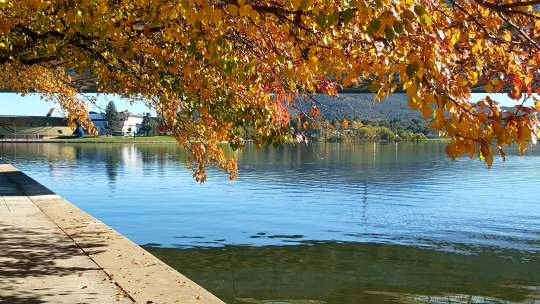
Autumn colours along Queen Elizabeth Terrace. Canberra, Australia.
10 notes
·
View notes
Text

Canberra, Australia: Lake Burley Griffin and Black Mountain.
#canberra#australia#nature#water#mountains#australian capital territory#world capitals#tower#lake burley griffin#black mountain#march
7 notes
·
View notes
Text

Pre-skyfire picnics
2 notes
·
View notes
Text
Telstra Tower

View On WordPress
#ACT#Australia#Black And White#Black Mountain#Canberra#Clouds#Lake Burley Griffin#LBG#Long Exposure#Monochrome#ND Filter#Telstra Tower
2 notes
·
View notes
Photo

REUBEN INGALL - THREAD
5th anniversary
A rare playback of the album mixed for four-channel surround sound.
Rond Terrace, Lake Burley Griffin
3pm Sunday 28th May
FREE (BYO picnic rug)
“...a glorious psych-folk masterpiece that seems broken at every step but held together by its soulful tones. An organic tapestry of re-sampled and manipulated guitars … a series of mesmeric slow melodic and tonal realisations.” - hellosQuare recordings
#thread#2023#lakeside#lake burley griffin#canberra#playback#listening party#reuben ingall#poster#gig#surround sound#multichannel#hellosQuare#rond terrace
2 notes
·
View notes
Text

🖼️ Kings Park, one of the central parklands noted on the original Griffin design for the central basin of Lake Burley Griffin. Can you spot Telstra Tower in this pic?
📍 Parkes, ACT, Australia.
🗓️ February 2018.
0 notes
Text
Canberra: An evening ride around the lake

On my last night in Canberra, I took a bike for a ride around the eastern portion of the lake. This turned out to be a bit of a highlight due to the variety of views and how quickly I got away from the city itself.


The National Carillon sits on a little island in the lake, recently renamed in memory of the Queen. It contains 57 bells and chimes every 15 mins.
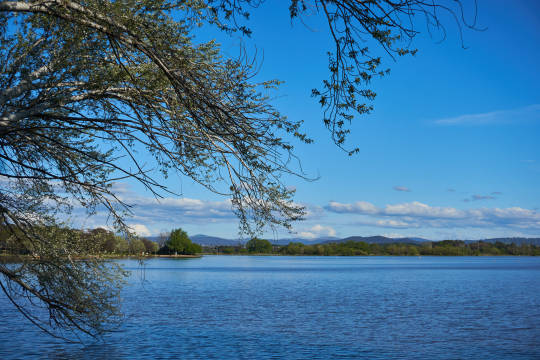

It was impressive that for essentially the whole route there was a proper cycle track.
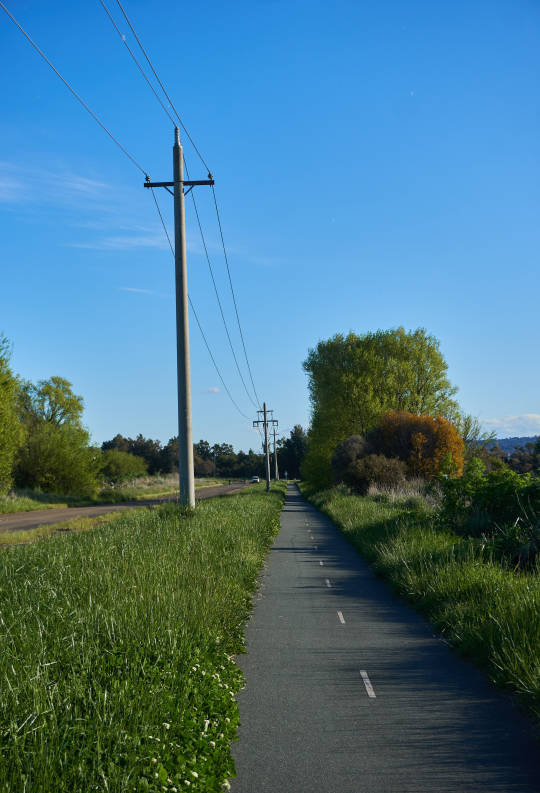

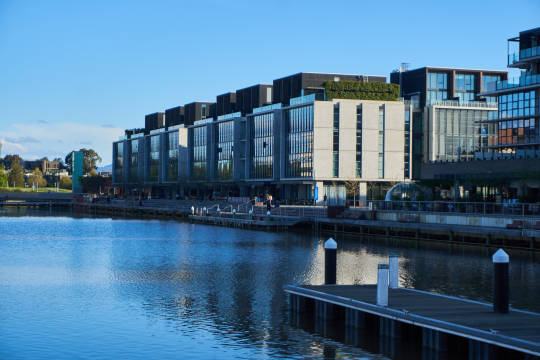
I went through Kingston, a modern 'canals' style development full of upmarket apartments and restaurants, before following the busier lakeshore paths back.
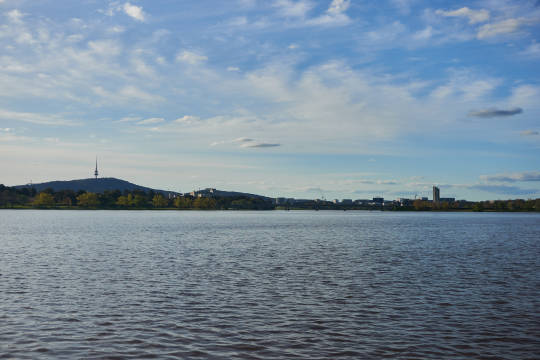

[10 October 2022]
#cbr22#kingston#lake burley griffin#lakeshore#bike ride#canberra#australian capital territory#australia#capital#cycling
1 note
·
View note
Text
The Queen and Me
The Queen and Me
Princess Elizabeth was traveling to visit Australia in 1952 when her father King George VI died. She returned to England without visiting. However, Queen Elizabeth II has visited Australia 16 times, usually on important milestones, anniversaries, or celebrations of Australian culture. I favour Australia becoming a republic but, nevertheless, over the years I have seen the Queen on a few occasions…
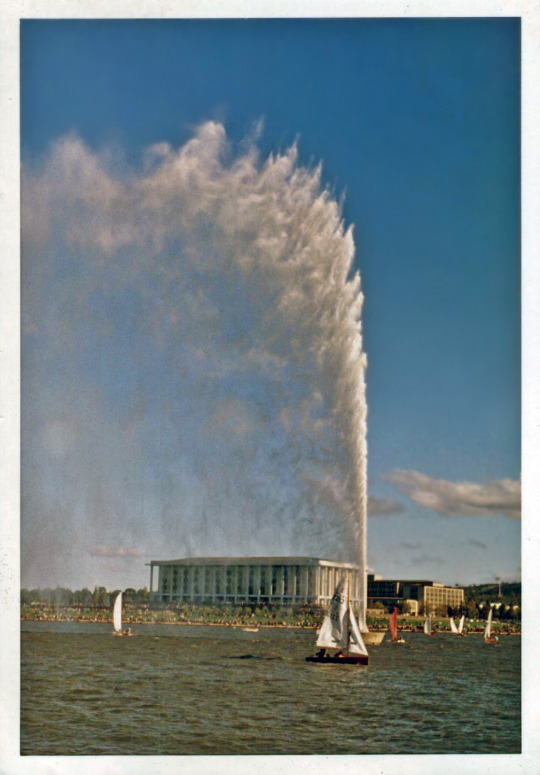
View On WordPress
#Aspen island#Bart Cummings#Beau Zam#Bicentennial#Canberra#Captain James Cook Memorial#Dugald Stuart#Indigenous activists#Lake Burley griffin#National Capital Authority#National Capital Exhibition#National Carillon#Parliament House#Platinum Jubilee#Prime Minister Anthony Albanese#Prisoners Action Group#Queen Elizabeth II#Queen elizabeth II Bicentennial Stakes#Queen Elizabeth II Stand#Quen Elizabeth II Island#Royal Purple#Royal race meeting#Royal Visits
0 notes
Text

Drifting #2
75 notes
·
View notes
Note
If Sniper is anything like I'd expect I feel like part of his ideal bonding time would involve setting out for a drive somewhere up the Top End and then you both show up in. Bloody. Alice Springs or Tasmania or crashed into Lake Burley Griffin. Three weeks later. With a new knowledge of small town drama from 1959, kangaroo migratory habits, and a sunburn that'll turn to melanoma in twenty years time.
I dunno what judgement that casts on him.
Unrelated: I think Scout would make a really good Bad Roommate.
i that casts him as good autistic date
26 notes
·
View notes
Text

Found slide: Commonwealth Avenue Bridge crossing Lake Burley Griffin, Ngunnawal Ngambri country, Canberra, slide developed June 1965 (photographer unknown)
#found slide#commonwealth avenue bridge#ngunnawal country#ngambri country#canberra#australian capital territory#australia#kodachrome#1965
20 notes
·
View notes
Text

Canberra - Australia: drone show over Lake Burley Griffin
8 notes
·
View notes
Text

Sunset over Lake Burley Griffin and the National Library of Australia, Canberra.
25 notes
·
View notes
Text

Views from The Marion on a particularly gorgeous late summer day
24/3/24
#lake burley griffin#canberra#today#high tea for Maddis bday#can't believe we're in late March and it's still this summery and gorgeous
1 note
·
View note
Text
28 May 2023
On Parade
Anzac Parade
28 May 2023
If there’s one thing every capital city needs, it’s a big ceremonial thoroughfare. Washington has the National Mall, London has the Mall, Paris has the Champs Elysees, and even humble Canberra has Anzac Parade. In times of less construction, one could stand on the steps of the War Memorial and have an unobstructed view of the long avenue, and then, across Lake Burley Griffin, to both the Old and New Parliament Houses.
It’s perhaps odd to consider that nearly none of this was intentional. Anzac Parade was part of Walter Burley Griffin’s plan for Canberra, which I’ll link to here - Griffin, it seemed, really liked his big avenues, and you can see most of the modern Canberra roads there. Looking at drawings by Marion Mahony Griffin, which are in Nicholas Brown’s History of Canberra, there doesn’t really seem to be anything in the spot where the memorial is, and a bizarre domed building that looks like a cross between the US Capitol and the Angkor Wat stands on Capital Hill. Even Old Parliament House was only intended to be temporary. Of course, the First World War intervened, and thus the War Memorial came to sit where it does now at the base of Mount Ainslie, while the permanent parliament house was not constructed until the 1980s, and certainly looks like the product of its decade.
Just as Anzac came to exist, so did Anzac Parade. Like much of Burley Griffin’s plan, it took until later to come into fruition - it was opened in 1965. Over time, it came to be lined with individual war memorials to specific services, battles or wars. They run the gauntlet from the traditional statuary of the Army Memorial to the modern, cubical Peacekeepers Memorial; from the traditional heroic imagery of the Desert Mounted Corps Memorial to the sombre, ambiguous concrete monoliths that form the Vietnam War Memorial.
My uncle has been in town recently, so I took him up and down Anzac Parade to look at the array of memorials. It was a good opportunity to reorientate myself with them - and it’s a fairly good walk besides.

We started on the left side of the road (facing towards Mount Ainslie.) At the start of Anzac Parade there are two giant basket handles on either side of the road, forming the Australia-New Zealand Memorial. It’s perhaps fitting that we start with the oft-forgotten ‘NZ’ part of ANZAC; a healthy reminder that Gallipoli and the Western Front are just as important in Wellington as they are here. Moving along, one passes the Boer War Memorial. This is a very recent addition indeed - it was well into the 21st century before the South African War had its memorial in the national capital. Past that is the Desert Mounted Corps Memorial.
I’m going to go a little deeper into this one, as there’s not much scope for the discussion of the Palestine campaign anywhere else. The Desert Mounted Corps, initially the Desert Column, operated in the Sinai Desert, Palestine and Syria between December 1916 and the end of the war, fighting against the Ottoman Empire. Initially the force was commanded by General Chetwode, but in mid-1917 General Harry Chauvel took command, the first Australian to command a corps. (Lawrence of Arabia, apparently, was not a big fan of him.) The Corps consisted of three divisions - two ANZAC and one British. An additional British division and an Indian brigade were added in mid-1918, and I believe there were detachments of French Colonial troops, although I can’t seem to confirm this right now. I tell you this because you would not know from looking at the memorial, which is entirely an Australian and New Zealand affair. Grumbling about the omitting of nationalities aside, a big reason the Desert Mounted Corps Memorial is of particular interest is because it’s actually a replica. The original was erected at Port Said in Egypt after the war, but during the Suez Crisis, it was targeted and destroyed by Egyptian nationalists as a symbol of the British Empire. The destruction of statutory, despite what some might say, is by no means a 21st century phenomenon.

Moving along, one passes the grey, funereal Vietnam Memorial, which asks visitors to walk inside it, and in which the names of the dead are gathered on a ring above. Then you pass the Korean War Memorial, with its army, navy and air force figures surrounded by tall steel poles that look like rain, and after that the comparatively conventional memorial to the army. At the end of Anzac Parade, nestled into the corner, is the Hellenic Memorial, which commemorates the battles of Greece and Crete during the Second World War. It’s built to resemble an amphitheatre, with a pillar marked with the Greek Orthodox cross and pair of steel beams in the middle. A map of the Aegean, almost stained glass in appearance, is made from tiles on the floor.
Perhaps entertainingly if one knows the history of Greco-Turkish relations, it’s positioned directly across the road from the Mustafa Kemal Ataturk Memorial. There probably aren’t many western democracies, with the obvious exception of Germany, that have memorials to the enemy in their capital - still less to an autocratic dictator. Yet Ataturk holds a key position in Anzac mythology. As a Lieutenant-Colonel in the Ottoman Army, he played a role in the defence of Gallipoli against the British and Anzac forces. After the war, he became a key figure in the Turkish nationalist movement, and eventually the President. I have to be very careful what I say here, as I have to load and edit this in Turkey where it is illegal to defame Ataturk, so I’ll focus my discussion on the inscription on the memorial.
It’s a long one, and it’s a little hard to see on my photograph, so I’ll just type it out.
Those heroes that shed their blood and lost their lives … you are now lying in the soil of a friendly country. Therefore rest in peace. There is no difference between the Johnnies and the Mehmets to us where they lie side by side here in this country of ours … you, the mothers, who sent their sons from faraway counties, wipe away your tears. Your sons are now lying in our bosom, and are in peace. After having lost their lives on this land, they have become our sons as well.
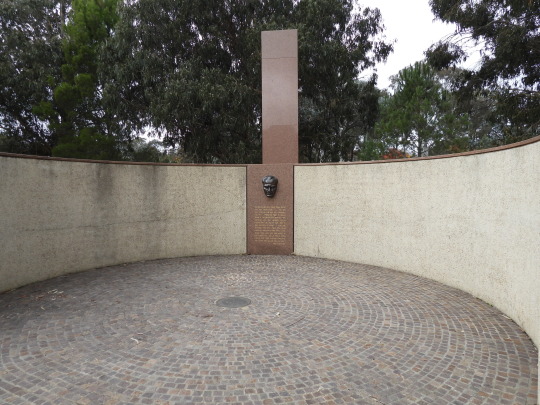
Beautiful sentiment, right? The only problem is that Ataturk almost certainly didn’t say them. I’ll link to an excellent article on the subject at Honest History (and honestly, I’d recommend that website for a lot of things) but the basic gist of the problem is that knows when he said it, or if he dictated it to someone else, or if it was a letter, or really anything else about the providence of the quote, and it really seems to have started being kicked around in the 1980s. There is no evidence prior to 1953 of the speech (or letter, or dictation, or lavatory graffiti) existing.
So why, when we know he probably say it, is it still there? I think it’s because it’s comforting. It’s a little bit of myth making that serves to make the past a little more bearable. To imagine your father or grandfather lying in the bosom of a friendly nation is palatable. To imagine him buried in an enemy country, whose soldiers killed him, is less so.
Traveling back down Anzac Parade, one next passes the memorial to the Royal Australian Navy Memorial, a mishmash of flesh and steel shapes which includes a fountain. Beyond that is the ‘shower curtain’ - the derogatory name a veteran nurse gave to the Nurse’s Memorial. This is the most vertical of the memorials on Anzac Parade - a blue glass structure that visitors can walk into, listing the names of conflicts and postings of the nursing service and displaying images of nurses throughout Australian military history. It is worth pointing out that this is a memorial specifically to nurses in the Australian service, not Australian nurses - nurses who died in the British service are not commemorated either here or on the Roll of Honour. I know you’re getting sick of links by now, but here’s one to a video on that subject.
We then pass the Royal Australian Air Force Memorial, which I’ve never been a particular fan of - it just seems a bit dull to me, if I’m completely honest. Past that is the great tan monument to the Rats of Tobruk - the men of the 9th (and one brigade of the 7th) Division who defended Tobruk from the Nazi Afrika Korps in 1941. (I am going to get into so much trouble for calling Rommel’s Afrika Korps ‘Nazi,’ which is of course precisely why I did so.) Finally, one passes the impenetrably abstract Peacekeepers Memorial, before reaching the other side of the New Zealand Memorial.

This walk took us about an hour, and on the way home, we decided to try to find the Air Crash Memorial in the Pialligo Forest. The key word was ‘try,’ because it turns out there’s no road access and it’s a 3.2km walk to reach it. As we’d already been walking, we decided to call it a day. The air crash in question was the Canberra Air Disaster - a Lockheed Hudson crashed on approach to Canberra airport on the 13th of August 1940, killing three members of the cabinet and Chief of the General Staff General Sir Brudenell White. This is another name we’ll probably come back to. Suffice it to say, it was a major body blow to Robert Menzies’ first government and probably contributed to its fall the following year (although Menzies buggering off to London for several months to pester Churchill probably didn’t help either.)
All in all, it was a good day. I don’t know when I’ll write again, though I’m hoping soon - otherwise I shall see you in two weeks, as there’s a few thoughts I might want to get onto paper while I’m in Sydney.
#anzac parade#australian war memorial#first world war#second world war#vietnam war#korean war#australian army#royal australian navy#royal australian air force#new zealand#australia#greece#turkey#mustafa kemal atatürk
6 notes
·
View notes
Text
Canberra, the capital city of Australia, offers a range of famous and luxury accommodations that cater to the discerning traveler. Known for its cultural landmarks, natural beauty, and vibrant atmosphere, Canberra provides a selection of prestigious and high-end hotels that ensure a memorable and indulgent stay. These renowned accommodations showcase elegance, exceptional service, and luxurious amenities, making them ideal for travelers seeking an unforgettable experience in the heart of Australia's capital.
Main Points
Hotel Realm: Located in the prestigious suburb of Barton, Hotel Realm is a luxurious accommodation option in Canberra. It offers stylish rooms and suites, fine dining restaurants, a day spa, and access to the state-of-the-art fitness center. The hotel is known for its elegant design, impeccable service, and proximity to major landmarks and attractions.
Hyatt Hotel Canberra: Set in a heritage-listed building, the Hyatt Hotel Canberra is renowned for its timeless elegance and luxurious ambiance. Guests can experience spacious rooms and suites, exquisite dining options, a relaxing spa, and beautiful landscaped gardens. The hotel's prime location near Lake Burley Griffin and Parliament House adds to its appeal.
Hotel Kurrajong Canberra: This historic hotel holds a special place in Canberra's history, having hosted political figures and dignitaries. It offers beautifully appointed rooms with a blend of heritage charm and modern amenities. Guests can enjoy fine dining, a fitness center, and easy access to key attractions like the National Gallery of Australia and the Australian War Memorial.
East Hotel: Combining contemporary design with a vibrant atmosphere, East Hotel offers stylish and spacious apartments suitable for both short and long stays. The hotel features a range of amenities including a restaurant, bar, gym, and complimentary bikes to explore the city. Its location in the trendy suburb of Kingston adds to its appeal.
The Diamant Hotel: Nestled in the NewActon precinct, The Diamant Hotel is renowned for its avant-garde design and artistic ambiance. The hotel showcases boutique rooms and suites adorned with unique artwork and offers a range of amenities including a restaurant, bar, and fitness center. Its proximity to cultural institutions like the National Film and Sound Archive and the Canberra Theatre Centre makes it a popular choice among art enthusiasts.
Burbury Hotel: Situated within the Realm Precinct in Barton, Burbury Hotel offers contemporary luxury with spacious rooms and suites featuring modern decor and stunning views of the city. Guests can indulge in fine dining at the hotel's rooftop restaurant and bar, enjoy access to the Realm Precinct's facilities, and explore nearby attractions such as the National Gallery of Australia and Parliament House.
Brassey Hotel: Housed in a charming heritage-listed building, Brassey Hotel offers elegant rooms and suites with a touch of old-world charm. Located within the leafy suburb of Barton, the hotel provides a tranquil retreat while still being close to major attractions. Guests can enjoy dining at the hotel's restaurant, relax in the gardens, and explore nearby landmarks such as the National Library of Australia and Lake Burley Griffin.
Conclusion
In conclusion, Canberra boasts a selection of famous and luxury accommodations that cater to the needs of discerning travelers. Whether it's the elegant Hotel Realm, the historic Hyatt Hotel Canberra, the artistic ambiance of The Diamant Hotel, or the contemporary luxury of East Hotel, each accommodation offers unique experiences and top-notch amenities. With their prime locations, proximity to major attractions, and impeccable service, these accommodations provide a luxurious and memorable stay in the heart of Australia's capital city.
2 notes
·
View notes